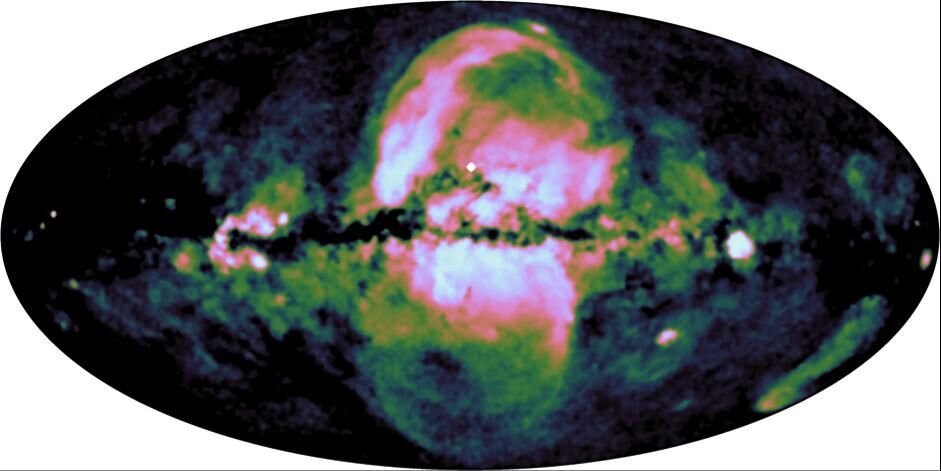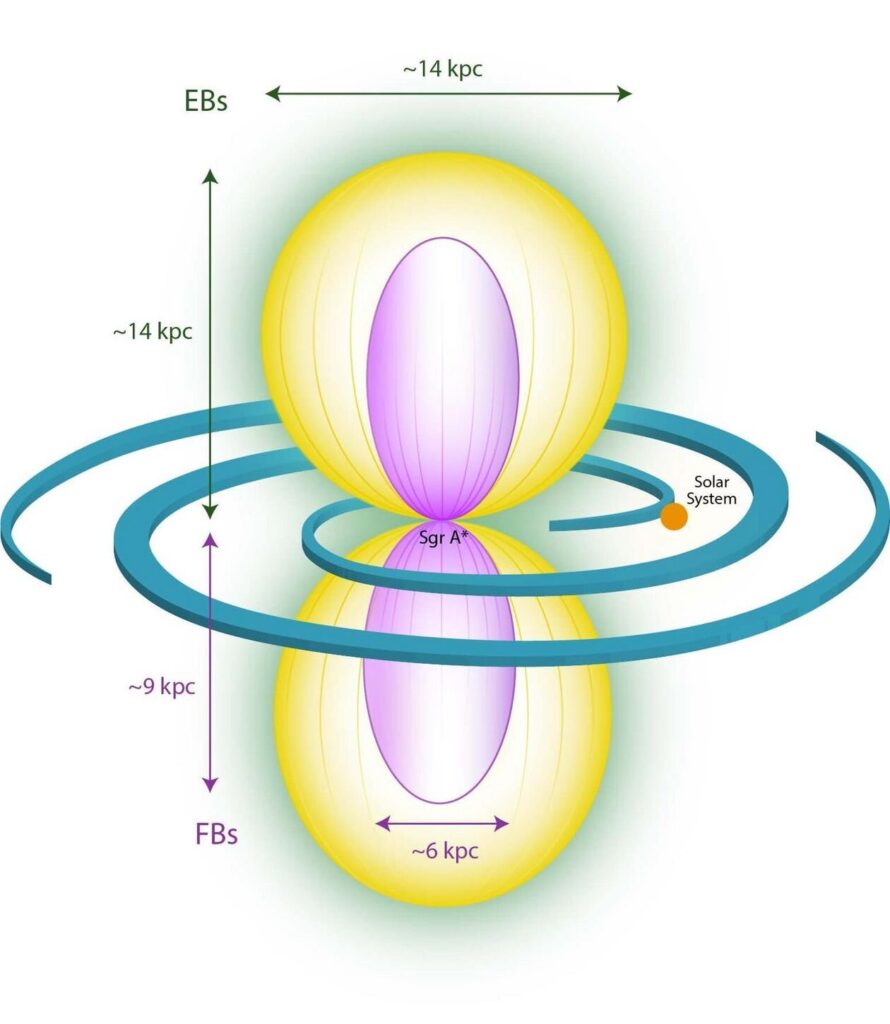The first all-sky survey performed by the eROSITA X-ray telescope on-board the Spektrum-Roentgen-Gamma (SRG) observatory has revealed a large hourglass-shaped structure in the Milky Way. In particular, astronomers have spotted a pair of enormous bubbles of plasma extending above and below the Milky Way and emitting X-rays, and they probably came from an extraordinary event in the galaxy’s centre.
These “eROSITA bubbles” show a striking similarity to the Fermi bubbles, detected a decade ago at even higher energies. The most likely explanation for these features is a massive energy injection from the galactic center in the past, leading to shocks in the hot gas envelope of our galaxy.
Astronomers have detected a remarkable new feature in the first all-sky survey map produced by the eROSITA X-ray telescope on SRG: a huge circular structure of hot gas below the plane of the Milky Way occupying most of the southern sky. A similar structure in the Northern sky, the “North polar spur,” has been known for a long time and had been thought to be the trace of an old supernova explosion. Taken together, the northern and the southern structures instead are reminiscent of a single hourglass-shaped set of bubbles emerging from the galactic center.

“Thanks to its sensitivity, spectral and angular resolution, eROSITA has been able to map the entire X-ray sky to unprecedented depth, revealing the southern bubble unambiguously,” explains Michael Freyberg, a senior scientist working on eROSITA at the Max Planck Institute for Extraterrestrial Physics (MPE). eROSITA scans the entire sky every six months and the data allows the scientists to look for structures that cover a significant portion of the whole sky.
Andrea Merloni at the Max Planck Institute for Extraterrestrial Physics in Germany and his colleagues found these balloons of hot plasma using the eROSITA X-ray telescope aboard the Spektr-RG space observatory. Pictures of the entire sky from eROSITA revealed giant spheres of gas extending more than 45,000 light years above and below the disc of the galaxy. For comparison, the Milky Way is about 105,000 light years across.
Astronomers had already spotted the bubble above the galaxy, but we didn’t have any X-ray telescopes sensitive enough to see the more tenuous southern one. “Because it was only one-sided, people had a lot of trouble figuring out what they were and where they come from,” says Merloni. “Now we finally see the southern bubble, so a lot of the controversy about the northern bubble is resolved.”

Before, we couldn’t be sure whether the northern bubble came from the centre of the galaxy or if it was actually a closer structure that we just happened to be viewing from an angle that gave us that impression. With these new observations, it is almost certain that the former is true, but we still don’t know why the southern bubble is less dense than the northern one, says Merloni.

These X-ray bubbles were probably caused by the same event as the Fermi bubbles, which are similar but slightly smaller structures that emit gamma rays. The enormous size of the eROSITA bubbles gives us some insight into what kind of event could have caused both sets of spheres. It could have been a shock wave from a powerful episode of stellar birth near the centre of the galaxy, but it is tough to get enough energy from star formation to make such a powerful shock wave.

Instead, the bubbles were probably formed when matter fell into our galaxy’s central supermassive black hole, releasing an extraordinary blast of energy that ploughed through the gassy halo around the galaxy. “It would be no problem to have a little bit of gas falling onto the black hole and releasing the energy required to inflate these bubbles,” says Merloni. The eROSITA mission is expected to last at least six more years, so we should be able to learn more from its later observations.
Journal reference: Nature, DOI: 10.1038/s41586-020-2979-0
Source: newscientist, phys.org
